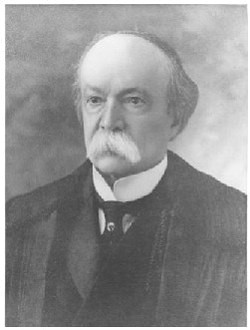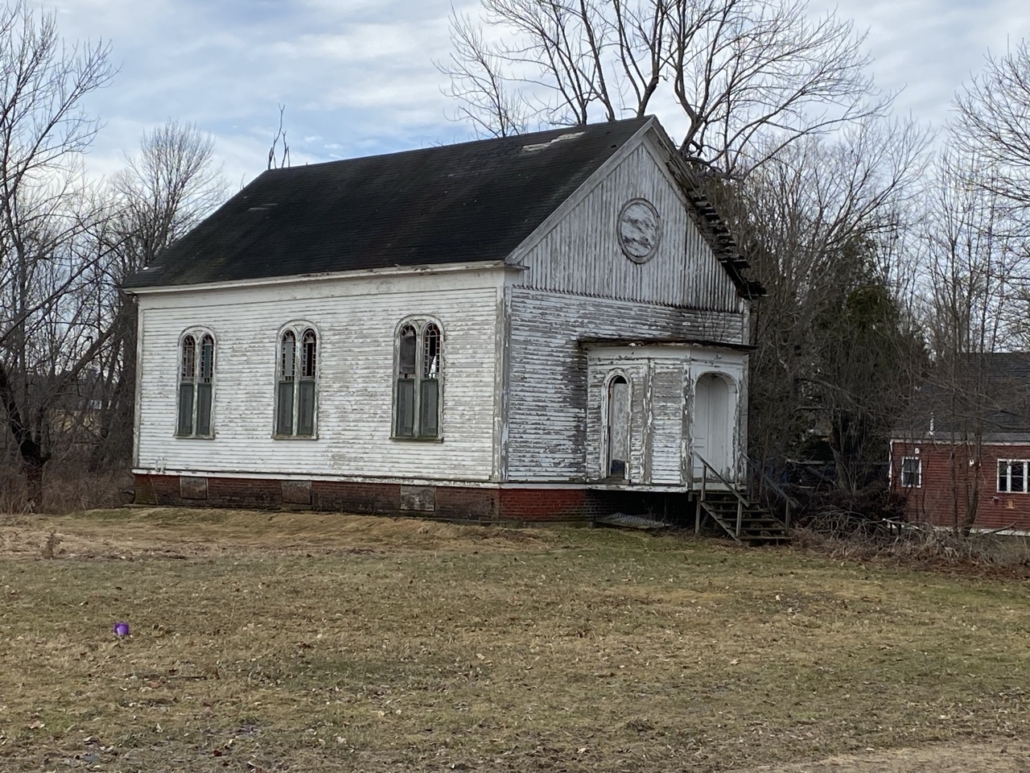Up and down the Kennebec Valley: Sidney settlers: Lovejoys & Marshes
by Mary Grow
Part III
(See Part I here, and Part II here.)
Previous articles in this series have mentioned two other early Sidney families who intermarried with Bacons and Faughts, the Lovejoys and Marshes. This article will provide more information about both.
The first Lovejoy in Sidney is named Abial (in the on-line source Find a Grave and in Henry Kingsbury’s Kennebec County history) or Abiel (in the on-line source minerdescent and in Alice Hammond’s 1992 bicentennial history of Sidney), and is known as Captain Lovejoy and Squire Lovejoy. His second son and namesake also gets both spellings, more commonly Abial. Your writer will try to minimize confusion by using the senior Lovejoy’s titles.
Lovejoy was called “Captain” based on his Massachusetts military service. Minerdescent says he acquired the title “Esquire” when he was appointed a Justice of the Peace in 1781.
Kingsbury listed Esquire Abial Lovejoy and John Marsh as two other 1763 grantees of land from the Kennebec Proprietors (with Levi Powers, whose house on the National Register of Historic Places was described last week).
* * * * * *
Hammond’s history includes a 1991 summary Lovejoy family history that she credits to descendants Betty Bennett and Anita Lovejoy. It also includes the 1892 Kennebec Journal article (referenced in previous articles in this series) that mentions the Lovejoys.
The newspaper writer included two generations, “old Squire Lovejoy, the old slave holder” (Dec. 16, 1731 – July 4, 1811); and “probably his son,” Abial Lovejoy (Feb. 8, 1764 – Nov. 3, 1858).
Captain Lovejoy was born in Andover, Massachusetts, and married Mary Brown on Dec. 14, 1758, in Charlestown, Massachusetts (which one source says was her birthplace).
Mary Brown was born March 29, 1734 (Minerdescent), or July 19, 1741 (most sources), and died Jan. 19, 1812. She and her husband had two, seven, eight or 14 children, depending on the source.
Minerdescent lists seven sons and seven daughters, born between Aug. 8, 1759, and Oct. 1, 1785. The two oldest, Nathaniel (named after his maternal grandfather, Nathaniel Brown) and Polly, were born in Charlestown; the next 11 (including Abial, Jr.) in Pownalborough, Maine; and the youngest, Phebe, who married Ebenezer Morse (mentioned in the Aug. 8 article on the Bacon family), in the western part of Vassalboro that became Sidney.
(Find a Grave, usually a reliable source, names seven children born between Aug. 8, 1759, and Oct. 31, 1780, and lists birthplaces, after the first two in Charlestown, in Vassalboro, Waterville or Sidney – no mention of Pownalborough. The names and dates duplicate the longer minerdescent list.)
Minerdescent, citing older sources, describes Captain Lovejoy’s career in Pownalborough (now Dresden), a town farther down the Kennebec River that was incorporated in 1760.
This source says he first came to Maine, specifically Fort Halifax, with British troops from Massachusetts in 1755. By 1758 he was a captain, headquartered at Pownalborough. Hammond wrote that he served with the British in Maine from 1758 to 1771, and later in the Americans’ Revolutionary Army.
He was also a ship captain out of Charlestown. Various sources say he went to Nova Scotia and the West Indies, and Mary sometimes sailed with him.
On Sept. 29, 1760, Captain Lovejoy bought 35 acres in Pownalborough, and in 1761 he, Mary and their first two children moved there. He became a prominent citizen, owning an inn, building an elaborate house, running a ferry, building ships, buying and selling land and serving as selectman in 1762 and 1764.
Minerdescent calls Mary “handsome” and “cultural,” and says the Lovejoy house was famous for its hospitality. The June 19, 1766, Pownalborough census said Captain Lovejoy “owned a two-story house with 152 squares of glass, one chimney, three rooms with fire places, supported seven persons under sixteen years, and ten persons above sixteen years and he owned one other house one story high with 44 squares of glass and two fireplaces.”
According to minerdescent, on Nov. 12, 1764, Captain Lovejoy and his father-in-law, Nathaniel Brown, “purchased half of a saw mill and adjoining land and a half interest in a dam on a small stream eight miles above Fort Western.” Your writer believes this stream was originally Bog Brook; by 1764 Hastings Brook; and today Goff Brook.
In Vassalboro, too, Captain Lovejoy ran a ferry. Lovejoy’s Ferry, operating in the early 1800s at Riverside, was the southern and earlier of two Kennebec ferries connecting Sidney and Vassalboro (the other was at Getchell’s Corner) that operated into the 20th century.
On-line sources say the oldest Lovejoy son, Nathaniel, born Aug. 8, 1759, took over the ferry, and later Nathaniel’s son Hiram, born Jan. 8, 1805, ran it for a while before moving to Massachusetts.
Minerdescent says the Lovejoys moved to Vassalboro in 1776. The account says they brought their household goods on “flat boats and scows which were towed by row boats”; the boat carrying their best furniture sank in a bad storm.
Their riverside farm remained in the family for several generations. Minerdescent has a long list of Captain Lovejoy’s positions in first Vassalboro and then Sidney, including being elected a selectman in each town. In 1777 he was involved in getting the Massachusetts legislature to expand postal service in Maine.
Captain Lovejoy’s son Abial was the constable who convened Sidney’s first town meeting after Sidney became a separate town on Jan. 30, 1792, Hammond said. In May of that year, Captain Lovejoy was one of the four-man committee chosen to settle accounts with Vassalboro. Later he served on Sidney’s fish committee for more than one term; on the committee that planned the town pound; and in 1798 on the school committee.
Captain Lovejoy served in the Massachusetts legislature for many years, minerdescent says. Your writer found no dates except the early 1780s, when some of his constituents questioned his support of the American cause against Britain.
Minerdescent presented evidence Captain Lovejoy was a staunch patriot. He stirred up opposition to local Tories, and lost $30,000 by giving members of Benedict Arnold’s 1775 expedition to Québec (including Arnold himself) hard money in exchange for paper Continental currency. The currency became worth so little that Captain Lovejoy reportedly wallpapered a room with it.
Captain Lovejoy and Mary died in Sidney in 1811 and 1812. Most sources agree they are buried on the Lovejoy farm, on a slope toward the Kennebec; some call this family graveyard Plain or Old Plain cemetery.
Minerdescent says an infant son or daughter, born and died in 1784, and at least three of the family’s black slaves are also buried there, with all graves marked alike by fieldstones. (When Massachusetts abolished slavery in 1783, Lovejoy offered his slaves their freedom.)
Henry Kingsbury wrote in his Kennebec County history that Old Plain was the oldest cemetery in Sidney and “is thought to hold the remains of over one hundred pioneers.” In 1892, he wrote, “That part of it that has not been plowed shows plainly the forms of many graves and has one shattered slate-stone slab, inscribed ‘Elizabeth Milliner —1785.'” Elizabeth Milliner was the Lovejoys’ housekeeper, minerdescent says, and Lovejoy had her gravestone put up.
Hammond also described the Old Plain cemetery, saying it was on River Road about a quarter mile south of Hastings Brook, “high above the river on a plain that was part of Abiel Lovejoy’s grant.” She, too, estimated 100 people were buried there.
“After many years the land was cultivated so that there are no signs of a cemetery now,” she wrote a century after Kingsbury’s account. But, she said, in 1908 a monument to early settlers was installed.
In another chapter, Hammond wrote that Captain Lovejoy donated land to the town for the Lovejoy cemetery on Densmore (now Dinsmore) road, “in which approximately a hundred of the earliest settlers are buried.” This cemetery is the one your writer visited on July 29; it is not on the bank of the Kennebec.
Kingsbury, minerdescent and other sources tell many stories about Captain Lovejoy and his household. Here is one of your writer’s favorites, paraphrased:
Squire Lovejoy went to the field where some of his farm help, free and slave, had been mowing, bringing them a jug of liquor (he himself was a heavy drinker, even for colonial days, minerdescent says). Dissatisfied with the work, he demanded to know who did it.
The other hands one by one blamed Boston, a slave who had been with the family since Lovejoy bought him in 1758. Well then, said Lovejoy, if Boston did all the work, he can have all the liquor.
Boston is named as one of the slaves buried in the Old Plain cemetery with Squire and Mary Lovejoy.
Minerdescent gives summary information on all 14 Lovejoy children. All married at least once (son Abial, Jr., and daughter Sarah each lost a first spouse and married again), and several spent their entire lives in Sidney.
* * * * * *
John Marsh was another man to whom the Kennebec Proprietors granted land in Sidney in 1763. By Hammond’s account, he was the great-grandson of a John Marsh who emigrated to Salem, Massachusetts, from England around 1634; he and his wife Susannah had six sons, including Samuel (1651 – 1693).
Samuel and his wife Priscilla had a son John (1681 -1727, called John, Sr., in some sources). He and his wife Abigail were parents of six children, including John, Jr. (born Oct. 8, 1718; or 1723). In 1763, John, Jr., came to Sidney with his wife Elizabeth (a widow; maiden name Caryl or Carryl, previous husband Cornelius Claflin, born in 1712, 1716, 1723 or 1725).
Of John Jr., and Elizabeth’s five children, born in Mendon, Massachusetts, one died young and four came to Maine. Two married Sidney men: Abigail (1747) married Dr. James Bacon (as reported two weeks ago), and Hannah (1755 – 1840) married Moses Hastings.
Hammond said the Hastings family owned an adjoining property, and Moses and Hannah inherited the Marsh farm. In 1892, Kingsbury wrote, John’s great-grandson, Lieutenant Gorham K. Hastings, owned the farm, “that has never been out of the possession of the family.”
He added, “The outlines of a block house and stockade are still on the bluff a few feet south” of the Hastings house. Settlers sometimes “took refuge” there fearing attach by Natives, he said.
Hammond wrote that Hastings descendants owned the farm “until Sarah Park Hastings [1857 – 1946] married William Lester Reynolds [1853 – 1926)].” Reynolds descendants owned the property until 2004. (See box.)
John Jr., and Elizabeth’s only son, also John (born in 1751), ended up in the Bangor area. Youngest daughter Mary (born in 1774; this birth date makes her mother’s earlier birth dates unlikely) lived in Paris, Maine.
Hammond wrote that John Marsh Jr., bought his 250 acres on June 8, 1763. He also bought a sawmill on Hastings Brook, which was his south boundary; had a grist mill close to River Road; and was involved with area mill projects.
Several sources say Elizabeth Marsh died June 19 and her widower died Aug. 19, both in 1802, both in Sidney.
Sidney’s Reynolds Forest
Part of John Marsh’s 1763 land grant is now Sidney’s Reynolds Forest, on the west side of West River Road near the Dinsmore Road intersection. This Kennebec Land Trust preserve is recommended for birding, wildflowers and hiking trails along what is now Goff Brook.
Visitors can see the waterfalls that powered the early mills, mill foundations and a cellar-hole in the woods. KLT warns of poison ivy near West River Road.
An online source says in 2004, Sidney resident Bea Reynolds donated the 35-acre Walter W. and Alice B. Reynolds Forest to KLT to honor her parents. In July 2003, a former resident named Leann Diehl added seven adjoining acres of hayfield.
Reynolds Forest, in Sidney.
Main sources
Hammond, Alice, History of Sidney Maine 1792-1992 (1992).
Kingsbury, Henry D., ed., Illustrated History of Kennebec County Maine 1625-1892 (1892).
Websites, miscellaneous.
Responsible journalism is hard work!
It is also expensive!
If you enjoy reading The Town Line and the good news we bring you each week, would you consider a donation to help us continue the work we’re doing?
The Town Line is a 501(c)(3) nonprofit private foundation, and all donations are tax deductible under the Internal Revenue Service code.
To help, please visit our online donation page or mail a check payable to The Town Line, PO Box 89, South China, ME 04358. Your contribution is appreciated!






Leave a Reply
Want to join the discussion?Feel free to contribute!